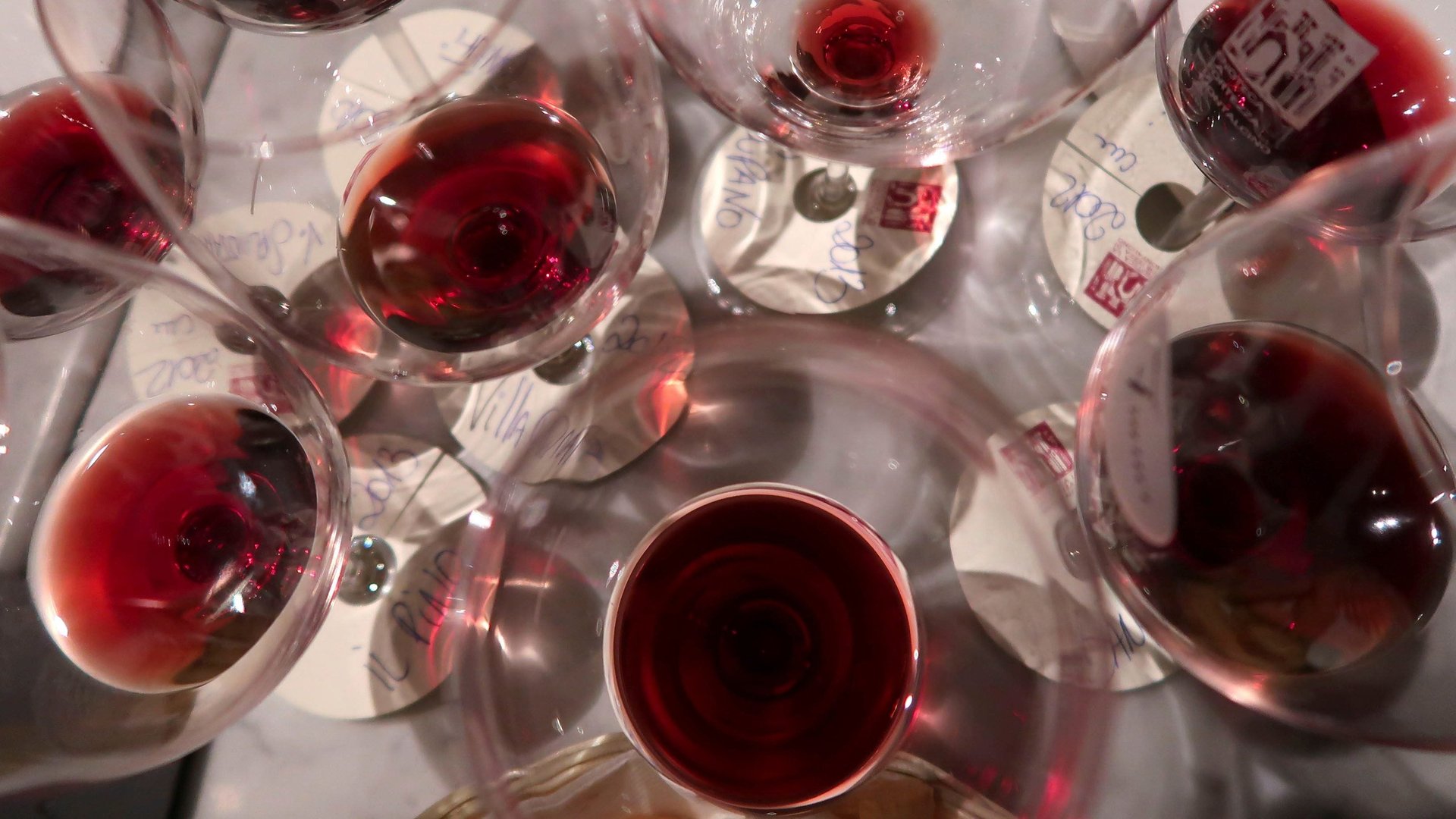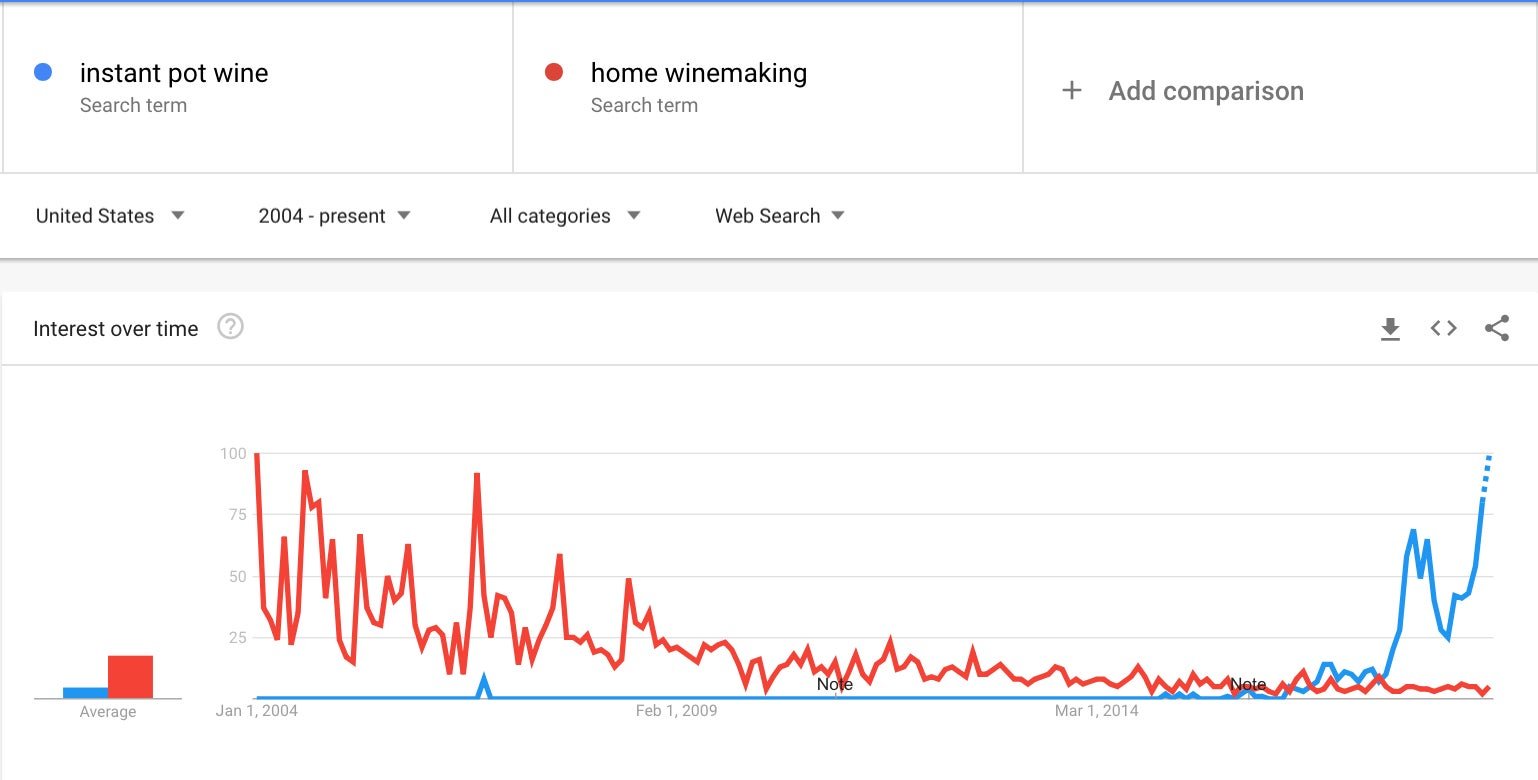Please do not offer me the “wine” you made from grape juice in your Instant Pot
DIY-loving Americans have come up with arguably the most despicable use for their Instant Pot: making homemade wine.


DIY-loving Americans have come up with arguably the most despicable use for their Instant Pot: making homemade wine.
Let’s be clear: This is isn’t a recipe for mulled wine. It’s grape juice transmogrified to table “wine.” Shunning centuries of enology and viticulture, lovers of the cult kitchen appliance claim that they can cut out the vintner and generate a palatable brew in just a few days, with supermarket grape juice such as Welch’s, a bit of sugar and yeast, and the multi-cooker’s “yogurt” setting.
The New Jersey-based food blogger David Murphy seems to have been the first to develop a recipe for wine in the Instant Pot, which he published on the blog, Food N Service. He says he was inspired by a meme that jokingly asked why no such recipe existed.
And since Murphy’s blog post circulated in February, it appears that more Americans have followed his zany experiment. A Google Trends snapshot indicates that interest in Instant Pot wine-making is on the rise in US, overtaking more generic searches for “home winemaking” in the last couple years.

Oregon and Washington register on top of the list of states where the term “instant pot wine” is queried on Google—which makes some sense given that the Pacific Northwest is a region where traditional wine making also thrives. Prior to this year, Canadian Instant Pot oenophiles were also researching recipes.
How does it taste? “Honestly, it was so much better than some of those cheap bottles of wine that I’ve bought. Dare I say, even better than the Two-Buck Chuck from Trader Joe’s,” Murphy reported, referring to the bargain-priced Charles Shaw wine sold at the US grocery chain.
James Tidwell, a master sommelier and founder of TEXSOM International Wine Awards, sampled wine made with Murphy’s recipe for The Dallas Morning News. He commends it for the “nice red color” and the lack of “horsey aroma.” After one gulp, Tidwell noted the high alcohol content. “You accomplished getting some alcohol into it. That’s for sure,” he said, rather diplomatically. Tidwell had few words to describe the taste except that to say that it was “very grapey”.

Vintners probably need not worry that their industry is about to be disrupted by Instant Pot wine. For one thing, the right type of grape is crucial in wine making, and it’s not the one you’ll find in grape juice.
Most wine is made from vitis vinifera, which are carefully cultivated to produce complex flavors. Welch’s, on the other hand uses “sweeter and sassier” table grapes such as Concord and white Niagara, which are classified as vitis labrusca. Though some producers are experimenting with labrusca grapes to make dessert wines, their composition is best suited for fruit juices, jams, and jellies. Making wine from these grapes’ fermented juice results in the weird “foxy flavors,” that Tidwell describes.
Turning down a glass of Instant Pot wine doesn’t have to convey high snobbery. The fact is, there are many good, inexpensive wines made by discerning winemakers to be discovered. And as that old saying goes, “life is too short to drink bad wine.”